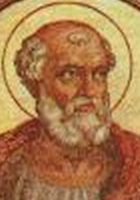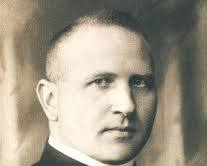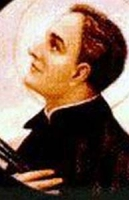Feast of the Immaculate Conception
கடவுளின் அதிதூய அன்னை மரியாளின் அமலோற்பவ திருவிழா
(Feast of the Immaculate Conception of the Most Holy Mother of God)
திருவிழா நாள்: டிசம்பர் 8
கடவுளின் அதிதூய அன்னை மரியாளின் அமல உற்பவ விழா என்பது, இயேசுவின் தாய் மரியாள், தமது தாயின் வயிற்றில் பாவமின்றி கருவானதைக் கொண்டாடும் விழா ஆகும்.
மரியாள் ஜென்மப் பாவம் இன்றி பிறந்தார் என்னும் கருத்தை மையப்படுத்தும் விழாவாக அமைந்துள்ள இது, கத்தோலிக்க திருச்சபையில் டிசம்பர் மாதம், 8ம் நாளன்று, சிறப்பிக்கப்படுகிறது.
அமல உற்பவம்:
அமலோற்பவ அன்னை:
பொதுவான கிறிஸ்தவ நம்பிக்கையின்படி, ஆதாமினால் தோன்றிய பாவம் மரபுவழியாகத் தொடர்ந்து உலகில் பிறக்கும் ஒவ்வொரு குழந்தையோடும் இணைந்து பிறக்கிறது. இது சென்மப் பாவம் அல்லது பிறப்புநிலைப் பாவம் என்று அழைக்கப்படுகிறது. இப்பாவம் மனிதரை கடவுளின் அருள் நிலையில் இருந்து பிரித்து, உலகின் தீய நாட்டங்களுக்கு அடிமை ஆக்குகிறது.
தந்தையாம் கடவுள், உலக மீட்பரின் தாயாகுமாறு மரியாளை தொடக்கம் முதலே தெரிந்துகொண்டார். எனவே, மரியாளுக்கு மிகுதியான அருளைப் பொழிந்து, பாவ மாசற்ற நிலையில் தாயின் வயிற்றில் கருவாக உருவாகச் செய்தார். இதுவே, மரியாளின் அமல உற்பவம் என்று அழைக்கப்படுகிறது. மீட்பரின் தாயானதால், மீட்பின் பேறுபலன்கள் மரியாளுக்கு முன்னதாகவே வழங்கப்பட்டன.
வரலாற்றில்:
✹ கி.பி. ஐந்தாம் நூற்றாண்டில், டிசம்பர் மாதம், 9ம் தேதி “கீழை கிறிஸ்தவ திருச்சபை” (Eastern Christian Church) முதன்முதலாக "கடவுளின் அதிதூய அன்னையின் மாசற்ற அமலோற்பவம்" (Feast of the Conception of the Most Holy and All Pure Mother of God) என்ற பெயரில் கடவுளின் தூய அன்னையின் அமலோற்பவ விழாவை “சிரியா”வில் (Syria) கொண்டாடியது.
✹ கி.பி. ஏழாம் நூற்றாண்டில், கீழைத் திருச்சபையின் பெரும்பாலான இடங்களில் இவ்விழா சிறப்பிக்கப்பட்டது.
✹ கி.பி. எட்டாம் நூற்றாண்டில், மேலைத் திருச்சபைக்கு பரவிய இவ்விழா டிசம்பர் 8ம் தேதி கொண்டாடப்பட்டது.
✹ கி.பி. பதினொன்றாம் நூற்றாண்டில், "மரியாள் பாவமின்றி உற்பவித்தவர்" என்ற கருத்துரு தோன்றியது.
✹ கி.பி. 1476ம் ஆண்டு, திருத்தந்தை நான்காம் சிக்ஸ்டஸ் (Pope Sixtus IV) மரியாளின் அமல உற்பவம் திருவிழாவை அனைத்து இடங்களிலும் கொண்டாடுமாறு அறிவுறுத்தினார்.
✹ “டிரென்ட் பொதுச்சங்கம்” (Council of Trent) (1545-1563), பிற்காலத்தில் இவ்விழா கொண்டாட்டங்களுக்கு ஆதரவு தெரிவித்தது.
✹ கி.பி. 1854ம் ஆண்டு, டிசம்பர் மாதம், 8ம் தேதி, திருத்தந்தை ஒன்பதாம் பயஸ் (Pope Pius IX) மரியாளின் அமல உற்பவத்தை விசுவாசக் கோட்பாடாக (Dogma of Faith) அறிவித்தார்.
✹ கி.பி. 1858ம் ஆண்டு, ஃபிரான்ஸ் நாட்டில் லூர்து அன்னையாக காட்சி அளித்த மரியன்னை, "நானே அமல உற்பவம்" என்று தம்மை அறிமுகம் செய்து கொண்டார்.
Also known as
• Immaculate Conception of Mary
• Mary, the Immaculate Conception
• Nossa Senhora da Conceição
• Our Lady of the Immaculate Conception
Profile
The Blessed Virgin Mary was preserved from the stain of original sin in the first instant of her conception in the womb of her mother. This was a singular privilege and grace of God, granted in view of the merits of Jesus Christ. By her conception is meant not the act or part of her parents in it, nor the formation of her body, nor the conception of Christ later in her own womb; from the moment her soul was created and infused into her body, it was free from original sin and filled with sanctifying grace. Her soul was never stained by original sin, nor by the depraved emotions, passions, and weaknesses consequent on that sin, but created in a state of original sanctity, innocence, and justice. She had at least the graces of the first Eve before the Fall and more. This privilege was befitting the one who was to be mother of the Redeemer.
The doctrine was defined by Blessed Pope Pius IX, 8 December 1854. It is in accord with the texts of Scripture (Genesis 3), "I will put enmities between thee [the serpent] and the woman, and thy seed and her seed"; (Luke 1), "Hail, full of grace." It is established by tradition, by the writings of the Fathers, by feasts observed in honour of this prerogative, by the general belief of the faithful. The very controversies over it among theologians brought about a clear understanding and acceptance of the doctrine long before it was declared by Blessed Pope Pius IX. After the declaration, some Protestant writers denounced what they styled Mariolatry (idolatry of Mary). However, there is a constantly-growing devotion among Catholics, and respect among some Protestant groups for the prerogatives of the Mother of Our Redeemer.
Among the many masters who have represented the Immaculate Conception in art are: Carducci, Carreno de Miranda, Falco, Holbein, Montanes, Muller, Murillo, Reni, Ribera, and Signorelli. It is the title she used when appearing at Lourdes.
The feast originated in the East about the 8th century where it was celebrated on 9 December. In the Western Church it appeared first in England in the 11th century and was included in the calendar of the universal Church in the 14th century. It has a vigil and an octave, and is a holy day of obligation in the United States, Ireland, and Scotland.
Saint Noel Chabanel
Additional Memorials
• 16 March - Jesuits
• 26 September - as one of the Martyrs of North America
Profile
Son of a notary, and one of four children. Entered the Jesuit novitiate in Toulouse, France on 8 February 1630. College teacher in Toulouse from 1632 to 1639. Ordained in 1641. Taught rhetoric at the college of Rodez. Noel, like many other Jesuits, felt a call to missionary work. Missionary to the Hurons in New France in 1643, arriving in Quebec on 15 August.
Father Noel had terrible trouble adapting to the mission fields. He could not grasp the languages of the natives, hated the food, never became comfortable with the living conditions, and was going through a period of spiritual dryness and trial. Deciding to go completely on faith, he vowed before the Blessed Sacrament that if necessary he would spend the rest of his life at the work. He survived a massacre of Christian Hurons by pagan Iroquois, and was leading a group of survivors to safety when he was murdered by an apostate Huron. One of the Martyrs of North America.
Born
2 February 1613 at Saugues, France
Died
8 December 1649 on a trail near Saint Jean, Ontario, Canada
Canonized
29 June 1930 by Pope Pius XI
Saint Narcisa de Jesús Martillo-Morán
Profile
Daughter of Pedro Martillo Mosquera and Josefina Moran. Her people were farmers, and her parents died when she was still a child. She moved to Guayaquil, Ecuador where for the next 15 years she worked as a seamstress to support her younger siblings, living a single life, helping those even poorer than herself when she could, and spending her time in prayer. In 1868 she moved to Lima, Peru where she worked in a convent of Dominican nuns. She never took vows and remained a lay person her whole life, but spent eight hours a day in prayer, lived as austerely as any sister, and was known to experience ecstasies.
Born
29 October 1832 at Nobol, Guayas, Ecuador
Died
• 8 December 1869 at Lima, Peru of natural causes
• re-interred at Guayaquil, Ecuador in 1955
Canonized
Sunday 12 October 2008 by Pope Benedict XVI
Saint Eucharius of Trier
டிரையர் மறைமாவட்ட புனிதர் யூச்சரியஸ்
டிரையர் மறைமாவட்ட முதல் ஆயர்:
பிறப்பு: ----
இறப்பு: கி.பி. 250
ஏற்கும் சமயம்:
ரோமன் கத்தோலிக்க திருச்சபை
நினைவுத் திருநாள்: டிசம்பர் 8
புனிதர் யூச்சரியஸ், டிரையர் மறைமாவட்ட முதல் ஆயராக (First Bishop of Trier) .வணங்கப்படுகிறார். மூன்றாம் நூற்றாண்டின் பிற்பகுதியில் ,வாழ்ந்திருந்த இவர், பழமையான புராணங்களின்படி, கிறிஸ்துவின் எழுபத்திரெண்டு சீடர்களில் ஒருவராவார். புனிதர் பேதுருவால் ஆயராக அருட்பொழிவு செய்விக்கப்பட்ட இவர், இரும்பு யுகத்தின்போது, "கௌல்" (Gaul) என்னும் மேற்கு ஐரோப்பாவின் பிராந்தியத்திற்கு மறைபரப்பும் பணிகளுக்காக அனுப்பப்பட்டார். இவருடன், "திருத்தொண்டர் வலேரியஸும்" (Deacon Valerius), "துணைத் திருத்தொண்டர் மெட்டர்னஸும்" (Subdeacon Maternus) நற்செய்தி அறிவிக்கும் பணிகளுக்காக அனுப்பப்பட்டனர்.
கிழக்கு ஃபிரான்சின் பண்பாட்டு மற்றும் வரலாற்று பிராந்தியமான "அல்ஸாசிலுள்ள" (Alsace) "ரைன்" (Rhine) எனும் ஐரோப்பிய நதி படுக்கைக்கும், பின்னர் அங்கிருந்து "எல்லேலும்" (Ellelum) எனும் இடத்திற்கும் வந்தபோது, "துணைத் திருத்தொண்டர் மெட்டர்னஸும்" (Subdeacon Maternus) மரித்துப்போனார். புனிதர் பேதுருவிடமே திரும்பி விரைந்த அவரது தோழர்களிருவரும், இறந்தவரை உயிருடன் மீட்டுத் தருமாறு அவரை வேண்டினர். புனிதர் பேதுரு, யூச்சரியஸுக்கு தன்னுடைய வல்லமையை தந்தருளினார். அதனால் தொடப்பட்டபோது, நாற்பது நாட்களாக கல்லறையில் இருந்த மெட்டர்னஸ் உயிரோடு திரும்பினார். அதன்பின்னர், "ஜென்டைல்" (Gentile) எனப்படும் யூதரல்லாத இன மக்கள், பெருமளவில் கத்தோலிக்கர்களாக மனமாற்றம் செய்விக்கப்பட்டனர்.
பல்வேறு ஆலயங்காலை நிறுவயதன்பின்னர், தோழர்கள் மூவரும் "டிரையர்" (Trier) மாகாணத்திற்கு சென்றனர். அங்கே, சுவிசேஷ பணிகள் மிக விரைவாக முன்னேறி வந்தது. யூச்சரியஸ், தமது ஆயர் குடியிருப்புக்காக அந்த நகரத்தையே தேர்ந்தெடுத்தார். புராணத்தில் தொடர்புடைய மற்ற அற்புதங்களுடன், அவர் இறந்தவர் ஒருவரை உயிரோடு எழுப்பினார். ஒரு தேவதூதன், அவருடைய மரணவேளை நெருங்கி வந்ததையும், வலேரியஸை அவருடைய வாரிசாக சுட்டிக்காட்டினார்.
ஆயராக இருபத்தைந்து வருடங்களுக்கும் மேலாக பணியாற்றிய யூச்சரியஸ், டிசம்பர் மாதம் எட்டாம் தேதி, மரணமடைந்தார். நகருக்கு வெளியேயிருந்த தூய யோவான் தேவாலயத்தில் (Church of St. John) அவர் நல்லடக்கம் செய்யப்பட்டார்.
Profile
First bishop of Trier, Germany. A basilica was built over his tomb in the catacomb of Saint Matthias.
Legend says that he was one of the 72 disciples of Christ, and that he was sent to Gaul as its first bishop in the 1st century. There, one of his companions, Maternus, died. Eucharius returned to Saint Peter the Apostle, borrowed his pastoral staff, returned to Gaul, touched Maternus with the staff, and brought him back to life.
Died
relics in the crypt in the Basilica of Saint Matthias, Trier, Germany, and in Lisbon, Portugal
Saint Romaric of Remiremont
ரேமிரேமொண்ட் நகர் ரோமாரிக் Romarich von Remiremont
பிறப்பு
570,
பிரான்ஸ்
இறப்பு
8 டிசம்பர் 655,
ரேமிரேமொண்ட், பிரான்ஸ்
இவர் ரேமிரேமொண்ட் நகரில் பெனடிக்ட் சபையைத் தொடங்கினார். இவர் அரசர்கள் சிலரை மனமாற்றி பெனடிக்ட் துறவற சபையில் சேர்த்தார். அவர்களை துறவற வார்த்தைப்பாட்டை பெற்று சிறந்த துறவிகளாக வாழச் செய்தார். பின்னர் ஆலோசகராக பணியாற்றினார். பின்னர் அரசர் 2 ஆம் குளோடார் (Chlotar II) என்பவரிடமிருந்து நிலம் ஒன்றைப் பரிசாக பெற்றார். அந்நிலத்தில் 620 ஆம் ஆண்டு பெண்களுக்கென்று துறவற மடம் ஒன்றையும் கட்டினார். சில ஆண்டுகள் கழித்து அம்மடத்தை 2 மடங்காக விரிவடையச் செய்தார். இவர் தான் இறக்கும் வரை இவர் தொடங்கிய துறவற சபையை மிகக் கவனமாய் இருந்து வழிநடத்தினார்.
Also known as
Romaricus
Profile
Merovingian noble, Lord of Austrasia, and part of the court of King Clotaire II. Married layman. Converted by Saint Amatus. Monk at Luxeuil Abbey in Burgundy (in modern France). Founded the convent and monastery of Habendum at Remiremont (Romarici mons) and served as prior with Amatus as abbot. Romaricus became abbot in 623, a position he held 30 years. His two daughters, a grandson and a granddaughter all joined the houses under his leadership. Friend of Saint Arnulf of Metz. He died while on a mission to the Frankish court to petition for Dagobert to receive the crown.
Died
• 653 of natural causes
• relics enshrined at the altar of Remiremont in 1051
• church and relics destroyed in the French Revolution
Canonized
1051 by Pope Leo IX
Pope Saint Eutychian
Also known as
Eutychianus
Profile
He was the 27th pope, but very little is known about him. Legend says he buried 324 martyrs with his own hands, but he reigned in a quiet period of no state persecution, so this is questionable. Another legend credits him with developing the blessings of fields and crops, but this came later. Some documents call him a martyr, but there are no contemporary records to back it up.
Born
• Etruria or Tuscany (both in modern Italy)
Papal Ascension
4 January 275
Died
7 December 283
Blessed Alojzy Liguda
Profile
Blessed Alojzy Liguda was a Polish Roman Catholic priest and a member of the Society of the Divine Word (SVD). He was born on January 23, 1898, in Winów, Poland, and was ordained a priest in 1923. He served as a missionary in China and Africa before being arrested by the Nazis in 1942. He was imprisoned in the Dachau concentration camp, where he died on December 8, 1942, at the age of 44.
Born
23 January 1898 in Winów, Opolskie, Poland
Died
martyred on 8 December 1942 in the concentration camp at Dachau, Oberbayern, Germany
Beatified
• 13 June 1999 by Pope John Paul II
• recognition celebrated at Warsaw, Poland
Saint Thibaud de Marly
Also known as
Theobald, Thibaut
Profile
Born to the French nobility, he renounced the worldly life and property to become a Cistercian monk. Abbot of Vaux-de-Cernay monastery in Yvelines, France, a house with 200 monks, in 1235. Known as the humblest of the brothers.
Died
1247 of natural causes
Saint Patapius of Constantinople
திபெஸ் நகர புனிதர் படபியொஸ்
துறவு மட நிறுவனர்:
பிறப்பு: கி.பி. நான்காம் நூற்றாண்டு
திபெஸ், எகிப்து
இறப்பு: எகிப்து (Egypt)
நினைவுத் திருநாள்: டிசம்பர் 8
திபெஸ் நகர புனிதர் படபியொஸ், கி.பி. நான்காம் நூற்றாண்டைச் சேர்ந்த துறவியும், கிறிஸ்தவ புனிதரும் ஆவார். இவரது நினைவுத் திருநாள் டிசம்பர் மாதம் எட்டாம் தேதி அனுசரிக்கப்படுகின்றது.
இவரது உடலின் மிச்சங்கள் (Relic) இன்றும் கிரேக்கத்தில் ஏதென்ஸ் நகரின் அருகேயுள்ள “லௌட்ரகி” (Loutraki, a spa town near Athens, Greece) என்னும் இடத்திலுள்ள பெண்களுக்கான "புனிதர் படபியொஸ் துறவு மடத்தில்" (Monastery of Saint Patapios) வைக்கப்பட்டுள்ளன.
கி.பி. நான்காம் நூற்றாண்டில் எகிப்து நாட்டின் "திபெஸ்" (Thebes) நகரில் வசதி வாய்ந்த கிறிஸ்தவ பெற்றோருக்கு பிறந்த புனிதர் படபியோஸ், சிறு வயதிலேயே பாலைவனங்களில் ஒரு துறவியாக ஒதுங்கி வாழ்ந்தார். அவரது அறிவுரைகளைக் கேட்கவும், அவரது போதனைகளைக் கேட்கவும் மக்கள் கூட்டம் அவரைக் காண சென்று கொண்டிருந்தது. அவரது வாழ்க்கையில் பிறகு, அவர் திபெஸ் நகரையும் பாலைவனங்களையும் விட்டு "காண்ஸ்டன்டினோபில்" (Constantinople) சென்றார். அங்கே அவர், பின்னாளில் புனிதர்களாக அருட்பொழிவு செய்யப்பட்ட "வாராஸ்" (Varas) மற்றும் "ரெவௌலஸ்" (Ravoulas) ஆகிய இரு துறவிகளைச் சந்தித்தார். புனிதர் ரெவௌலஸ், "ரோமனோஸ் நுழைவுவாயில்” (Gate of Romanos) என்னுமிடத்தில் துறவியாக இருந்தார். புனிதர் வாராஸ், "பெட்ரியோன்" (Petrion) என்னுமிடத்திலுள்ள “ஸ்நாபக அருளப்பரின் துறவு மடத்தை” (Monastery of St John the Baptist) கட்டியவராவார்.
"ப்லாச்செர்னா" (Blachernae) என்ற இடத்திலுள்ள உலர் மலைப் பகுதிகளில் வசித்த புனிதர் படபியோஸ், "எகிப்தியர்களின் துறவு மடத்தினை" (Monastery of the Egyptians) கட்டினார். இறுதியில் அவர் அங்கேயே மரித்தார்.
கி.பி. 536ம் ஆண்டு, புனிதர் படபியோஸ் கட்டிய எகிப்தியர்களின் துறவு மடம் இடிக்கப்பட்டபோது, அவரது உடலின் மிச்சங்கள் கண்டுபிடிக்கப்பட்டு, புனிதர் வாராஸால், "பெட்ரியோன்" (Petrion) என்னுமிடத்திலுள்ள “ஸ்நாபக அருளப்பரின் துறவு மடத்துக்கு” (Monastery of St John the Baptist) கொண்டு செல்லப்பட்டன.
"காண்ஸ்டன்டினோபில்" (Constantinople) நாட்டை ஆண்ட "பைஸன்டைன் பேரரசின்" (Byzantine Empire) இறுதி நூற்றாண்டான அக்கால கட்டத்தில், புனிதர் படபியோஸின் உடலின் மிச்சங்கள் அரச பாதுகாவலுடன் கொண்டுபோகப்பட்டன. அப்போதைய பேரரசர் "பதினொன்றாம் காண்ஸ்டன்டைன் பலையோலோகோஸ்" (Constantine XI Palaiologos) அவர்களின் தாயாரும் பின்னாளில் கத்தோலிக்க அருட்சகோதரியான "புனிதர் ஹிபோமோன்" (Saint Hypomone) அதற்கு பேருதவிகள் செய்தார்.
"ஓட்டமோன்" பேரரசால் (Ottoman Empire) காண்ஸ்டன்டினோபில் வெற்றிகொள்ளப்பட்டதன் பிறகு, கி.பி. 1453ம் ஆண்டில் புனிதர் படபியோஸின் மிச்சங்கள் "பலையோலோகோஸ்" பேரரசரின் உறவினர் ஒருவரால் கடத்தப்பட்டு தென் கிரேக்கப் பகுதியிலுள்ள "ஜெரனியா" மலையிலுள்ள (Mount Geraneia) ஒரு குகையில் மறைத்து வைக்கப்பட்டது. சில நூற்றாண்டுகளின் பிறகு அது கைவிடப்பட்டது.
கி.பி. 1904ம் ஆண்டு, "லௌட்ரகி" (Loutraki) நகர மக்களால் அந்த குகையும் அதில் மறைத்து வைக்கப்பட்டிருந்த மிச்சங்களும் கண்டு பிடிக்கப்பட்டன. பின்னாளில் புனிதர் ஜெரோம் அவர்களின் மாணவர்களில் ஒருவரான அருட்தந்தை "நேக்டரியோஸ்" (Father Nektarios) என்பவர் புனிதர் படபியோஸின் மிச்சங்கள் மீட்கப்பட்ட அதே குகையில் ஒரு பெரும் துறவு மடத்தினை அமைத்தார். அங்கேயே மிச்சங்கள் திரும்ப வைக்கப்பட்டன.
புனிதர் படபியோஸ் அற்புதங்கள் நிகழ்த்துவதில் பிரசித்தி பெற்றவராவார். அவர் நிகழ்த்திய அற்புதங்கள் அங்குள்ள துறவு மடத்திலேயே பட்டியலிடப்பட்டுள்ளன. அவர் பெயரால் இன்றளவும் அதிசயங்களும் அற்புதங்களும் நடக்கின்றன.
Also known as
• Patapius of Thebes
• Patapius of Egypt
• Patapios...
Profile
Desert monk near Thebes, Egypt. Hermit outside the city walls of Constantinople. His reputation for holiness attraced a number of monks an other students, who then provided help to the poor, sick and needy of the area.
Born
Egypt
Died
7th century of natural causes
Blessed Johanna of Cáceres
Profile
Benedictine Cistercian nun the convent of Saint Benedict at Cáceres, western Spain when still very young; she spent almost her entire life in the convent. Abbess.
Born
14th century Spain
Died
murdered in front of the convent chapal altar by marauding soldiers on 8 December 1383 in Cáceres, Spain
Saint Gunthildis of Ohrdruf
Also known as
Cunihilt, Cynehild, Cynehildis, Gunthild
Profile
Nun. At the request of Saint Boniface, she travelled to Germany to become abbess of a convent in Thuringia. Inspector of all the schools that had been established in Germany by English nuns.
Born
at Wimborne, England
Died
c.748
Saint Casari of Villeneuve-lès-Avignon
Also known as
Cazarie, Gosaria
Profile
Hermitess in the area of Avignon, France near where the Abbey Saint-André-de-Villeneuve was founded.
Died
• 586 of natural causes
• relics in the Abbey Saint-André-de-Villeneuve
Blessed José María Zabal Blasco
Profile
Married layman in the archdiocese of Valencia, Spain. Martyred in the Spanish Civil War.
Born
19 March 1898 in Valencia, Spain
Died
8 December 1936 in Picadero de Paterna, Valencia, Spain
Beatified
11 March 2001 by Pope John Paul II
Blessed Iacobus Gwon Sang-yeon
Profile
Layman martyr in the apostolic vicariate of Korea.
Born
1751 in Jinsan, Jeolla-do, South Korea
Died
8 December 1791 in Jeonju, Jeolla-do, South Korea
Beatified
15 August 2014 by Pope Francis
Blessed Paulus Yun Ji-chung
Profile
Layman martyr in the apostolic vicariate of Korea.
Born
1759 in Jinsan, Jeolla-do, South Korea
Died
8 December 1791 in Jeonju, Jeolla-do, South Korea
Beatified
15 August 2014 by Pope Francis
Saint Macarius of Alexandria
Profile
During the persecutions of Decius he was dragged before a judge who tried to reason him into rejecting Christianty; it didn't work. Martyr.
Died
burned alive in Alexandria, Egypt mid-3rd century
Saint Sofronius of Cyprus
Profile
May have been a 6th century bishop on Cyprus, but the records of the period are all lost and all we know for certain is that his name has remained on the calendar.
Saint Anthusa of Africa
Profile
Martyred in the persecutions of the Arian Vandal king Hunneric.
Died
burned alive in the late 5th century



















